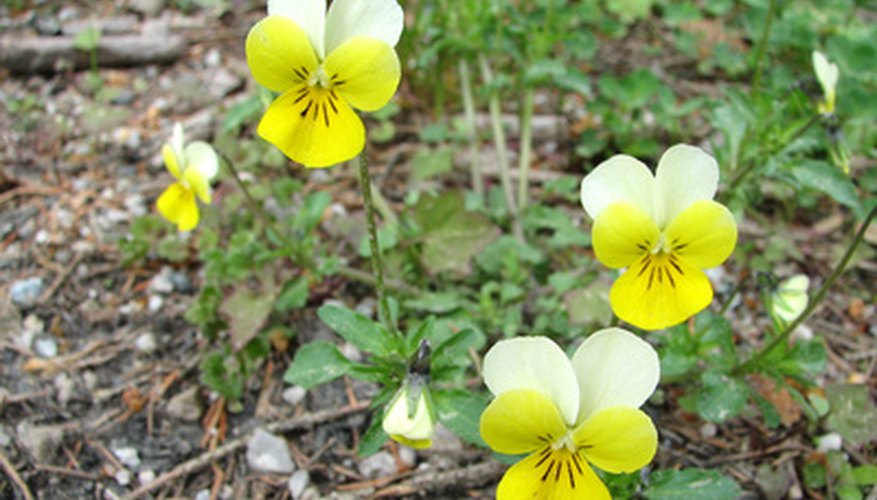Viola plants, also known as pansies (Viola x Wittrockiana), come in shades of apricot, black, blue, bronze, lavender, orange, pink, purple, red, mahogany, white and yellow. Five rounded petals frame the dark middle, known as the "face," of the lightly fragranced viola plant's blooms. Unfortunately, several bugs eat viola blooms. The garden pests can quickly damage viola blooms or kill the plant. Texas A&M University's AgriLife Extension reports that three types of garden pests pose a threat to violas.
Slugs
Several species of slugs wreak havoc on violas. These nocturnal pests leave a slimy trail behind as they work their way towards viola plants during the night. As they feed, they leave behind smooth-edged holes in the flowers and leaves of violas and closely-related pansies. They can chew through flowers stems, causing the blooms to die. Slugs hide under debris during the day. To control slugs, remove debris from the yard and hand pick slugs from the garden when you see them.
- Several species of slugs wreak havoc on violas.
- These nocturnal pests leave a slimy trail behind as they work their way towards viola plants during the night.
Spider Mites
The University of California's Integrated Pest Management Guide states that spider mites are one of the most common garden pests. Spider mites do not hide very well, they spin highly visible, telltale webs. Spider mites suck the cells out of viola plant leaves and blooms. Small, light spots appear on affected leaves and blooms. As the spider mites continue to feed, the viola blooms and leaves turn yellow and drop from the plant. Provide adequate amounts of water for viola plants; water stressed plants are prone to spider mites infestations. Use an insecticidal soap spray to control spider mites populations.
- The University of California's Integrated Pest Management Guide states that spider mites are one of the most common garden pests.
- Provide adequate amounts of water for viola plants; water stressed plants are prone to spider mites infestations.
Aphids
Aphids are small, soft bodied, pear-shaped bugs that eat viola blooms. Dense groups of aphids suck the nutrient rich juices out of the leaves, stems and flowers of plants. Infested viola plants become deformed and do not grow. Viola plant blooms turn a sickly yellow and curl at the edges before falling off. Ladybirds are natural predators of aphids. Purchase ladybirds from a gardening supple store to naturally control aphids.
- Aphids are small, soft bodied, pear-shaped bugs that eat viola blooms.
- Dense groups of aphids suck the nutrient rich juices out of the leaves, stems and flowers of plants.
